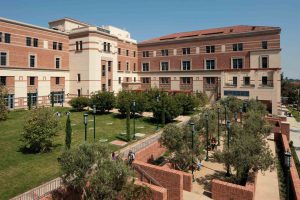I just returned from the International Surgical Sleep Society 2025 Annual Meeting in Indianapolis, Indiana. Neurostimulation was definitely on the agenda, as it is the most significant area of new technology applied to the treatment of obstructive sleep apnea. I thought I would devote this post to various approaches and the most recent research findings from the oral research presentations. With multiple neurostimulation technologies currently available for treating patients and many more in various stages of development, this is an exciting time (no pun intended) for treatment of obstructive sleep apnea.
Hypoglossal nerve stimulation remains the only FDA-approved neurostimulation treatment option in the United States. Inspire’s Upper Airway Stimulation technology continues to undergo innovation, with the recent release of the Inspire V technology that incorporates enhancements related to sensing of breathing patterns without needing a separate stimulation lead, improved control of stimulation parameters, and advances in patient monitoring (SleepSync). There were a number of presentations related to the Inspire therapy, examining factors associated with outcomes, including one showing that increased body mass index was associated with poorer outcomes only in those with drug-induced sleep endoscopy findings indicating lateral collapse (collapse of the sides of the throat).
With the August 2025 FDA approval of Nyxoah’s Genio technology and the publication of the DREAM study, there was substantial interest in the Genio platform. As opposed to the Inspire technology that stimulates the hypoglossal nerve on one side of the body only, the Genio delivers bilateral hypoglossal nerve stimulation. There was substantial discussion focused on which technology is better, and my opinion is that there will be more than one technology available in the years ahead. As was true with Inspire’s technology, we will learn more as the world develops more experience with the Nyxoah Genio, with research publications focused on outcomes and patient subgroups who may achieve better or worse outcomes. Ultimately, it may be important to have direct comparisons of technologies, including possible randomized trials. NOTE: I have been an advisor and a consultant for Nyxoah and will continue to work as a consultant, offering training to their team related to drug-induced sleep endoscopy.
Livanova has developed the aura6000, a system of unilateral hypoglossal nerve stimulation that has some differences from the other two. Livanova has submitted for FDA approval but do not yet have this approval. Livanova has conducted the THN3 trial and now have 5-year results that show consistency in results. Last year, they were able to stop their OSPREY randomized trial early because the data indicated a high likelihood of demonstrating benefit. Earlier this year, OSPREY results were shared with the scientific community, with a 58% response rate in the active treatment group, substantially better than the 14% response rate in the placebo group. There were no specific factors associated with results.
David Kent, MD from Vanderbilt University has conducted research funded by the National Institutes of Health focused on stimulation of a branch of the ansa cervicalis, specifically a nerve that goes to a neck muscle called the sternothyroid muscle. He has presented this impressive work at numerous scientific conferences. This year, he shared his research and development of a machine that will improve the quality of research examining airflow, both without treatment and with interventions designed to treat obstructive sleep apnea. In general, people are conducting research with CPAP machines that deliver positive pressure, examining how a study participant’s throat opens up at various pressures, potentially seeing how this changes with treatment (nerve stimulation, for example). Unfortunately, sometimes for research purposes it is necessary to evaluate the airway with negative pressure. You would not want to do this for patients, but it can be important for research. The only existing Pcrit machines in the world were built in the 1990s and early 2000s, and there really are only a handful of these in the world. Dr. Kent has designed and built a Pcrit machine that is reliable and accurate. This work was recognized as the best research presentation, and I am actually trying to purchase a machine that he will make himself for me to use in my own research. I am fortunate that he completed his fellowship training at my institution (when I was at USC), where I had the chance to work with him and build up some goodwill to be able to obtain a machine.
The phrenic nerve is well-known for providing innervation to the diaphragm, playing a major role in breathing (inhalation). In addition, this nerve has a sensing role, coordinating muscle activity of at least some muscles around the throat. Phrenic nerve stimulation is an approach taken by Lunair Medical, with work presented by Jason Yu, MD of Emory University. In interesting studies, they showed that they can improve airflow, especially when the phrenic nerve stimulation occurred towards the end of expiration.
Kevin Motz, MD from Johns Hopkins presented early results of stimulation of the lesser palatine nerve. This nerve innervates some muscles of the soft palate, and stimulation has the potential to open the airway in what I call the Palate Region here on this site. The treatment was delivered with wires extending from a mouthpiece, and it was only possible for individuals to tolerate the electrical stimulation because this was done while they received sedation during drug-induced sleep endoscopy. They showed that stimulation improved airflow during stimulation (and not without the stimulation, indicating that the effect was not related to waking up the study participants).




23 − = 13